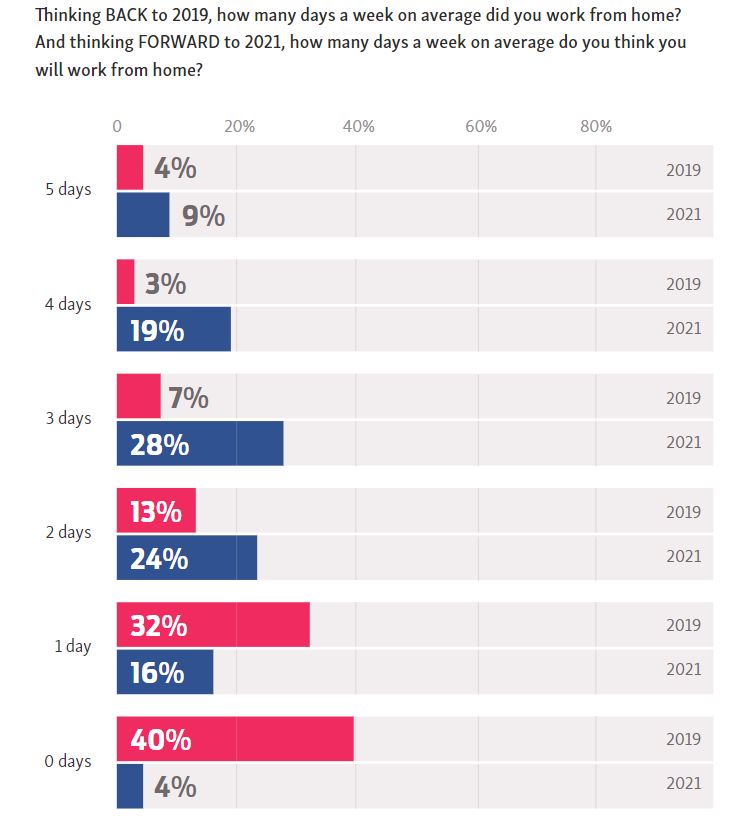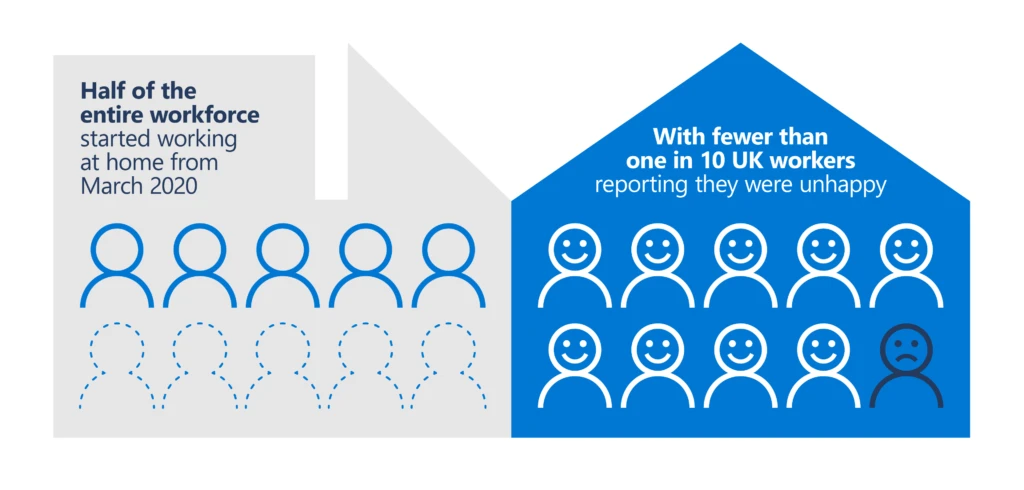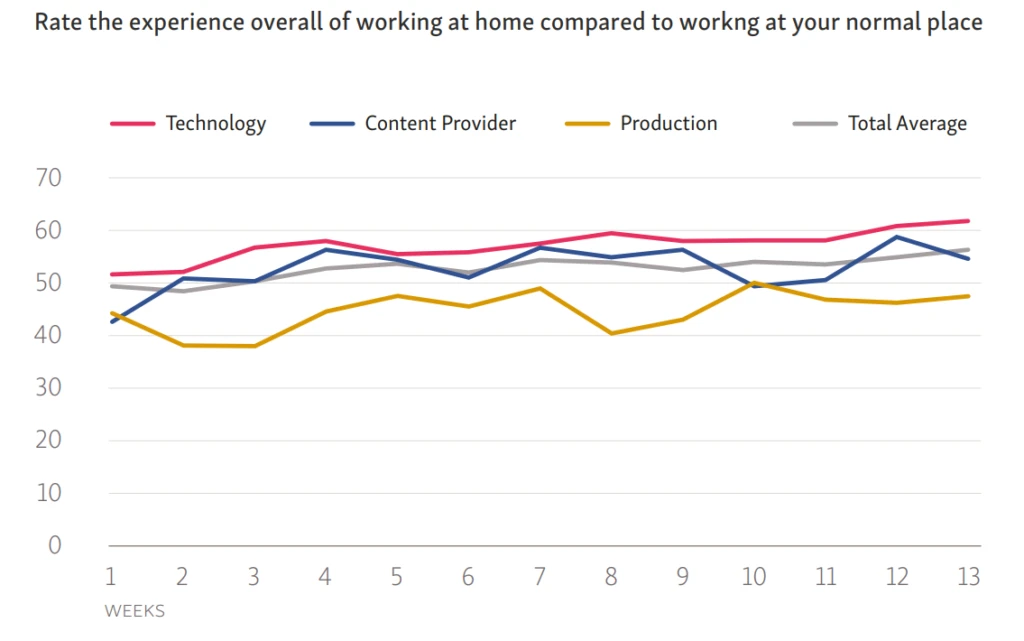
Changing the way we work: media companies in the new normal
The world has never experienced an event like COVID-19, but just how far has it affected the way we work? How equipped were media companies, in particular, to manage so many employees working from home? And how did their employees cope with the experience? What is the new normal for media companies?
A new report published by the Digital Production Partnership (DPP) with software developer Signiant, Will COVID-19 change the way we work?, uses quantitative and qualitative survey data to explore these and other questions.
The survey – whose respondents were senior employees representing dozens of media companies – started in March when most people began working from home and continued until late June 2020. And the results give us an intriguing insight into the new world of work and how we might expect it to unfold.
The way we were before the new normal
The report starts by looking at the pre-COVID work scene. While there was little appetite for permanent home working in the UK, the option to work from home was supported by 62 percent of respondents.
Interestingly, this preference varied across generations, with millennials more comfortable working away from the office.
The report politely corrects the many commentators who have identified a sudden, seismic shift in our working practices. It notes that, before COVID-19 emerged, there was already considerable pressure on employers to be more flexible and enable workers to spend less time in the office.
In the media industry, 96 percent of employees say they had worked from home at some time or other. In other words, COVID-19 simply accelerated a pre-existing workplace trend.
The report suggests that employees who were allowed to work from home previously also tended to be more engaged and more productive. In fact, the findings of large US employers are described here as ‘startling’, with reported home-worker productivity improvements of 15-40 percent.

Adjusting to the new normal
In the UK, approximately half of the entire workforce started working at home from March 2020. So how did they find the experience? What did they like, and what did they like least?

The overall attitude was largely positive, with less than one in 10 UK workers reporting they were unhappy. Most employees also self-reported their productivity to be the same or higher than in the office.
Their individual mood tended to fluctuate in line with their industry’s fortunes. For example, those who worked for content providers were close to the average score, while those who worked for technology providers – whose services were in demand throughout COVID-19 – were generally more positive. By contrast, work had stopped for many production companies at the start of COVID-19; their employees reported feeling less positive overall.

The future workplace: seven features of the new normal
In its final section, the report surveys C-suite attitudes that hint at media-company workplace trends in the coming months. Here are seven of the key themes.
1. Accelerated business transformation
At the end of June, 64 percent of companies predicted they’d need to rethink their working environments “quite a lot” or “hugely”. When this was probed further, 89 percent felt their approach to business would change to an extent or dramatically. And in the case of content providers, 100 percent felt their approach to business would change.
2. More flexible working
The majority of employees believe they’ll see “dramatic” changes in how they work. In March 2020, most media companies already used cloud-based work tools and were more prepared for flexible working than they realised. Few respondents want full-time home working, but 80 percent believe that by 2021 they’ll work at home for an average of two days a week or more.
3. Cost-cutting
With tighter budgets expected, it’s suggested that organisations will act to reduce both their operational and real-estate costs. The report cites a Gartner survey that found 74 percent of organisations planning to move some staff to remote working as part of a cost-cutting exercise.
4. Investment in tech
The report cites PwC research in which almost one-third of US CFOs surveyed said they’d be investing in technology for growth. Twenty percent believed investment in areas such as automation to be a way of enabling cost reductions. It’s also reported that tech spending will focus on building resilience and agility.
6. Flatter structures
Our recent shared adversity has seen new employer-employee trust nurtured by productive home working. 77 percent of respondents say their strongest positive feelings about returning to work relate to ‘seeing colleagues/sociability’. Some commentators speculate that our experiences have increased employers’ empathy and may prompt a move to flatter team structures.
7. Better contingency planning
When asked if their company would specifically plan for resilience in the future, 67 percent of respondents reported that they would. Many companies already started becoming resilient, pre-COVID-19, with applications and work becoming cloud-based. At the same time, no media company will emerge in the new normal the same as it was before. It’s a great opportunity to take learnings, success, and failings and plan your resiliency in terms of technology and culture for the future.
The new normal
We should be cautious about predicting dramatic long-term changes to the way people work given the complex and fragmented supply chain the industry is based on. However, in future, it could suit employers and employees to reduce reliance on office space. People want variety – so flexible working rather than home working. We may also see a proportion of city dwellers moving to rural surroundings and the coast as organisation use technology to access and connect the right talent and resource on a project basis more effectively. And companies will invest in technology solutions to reduce costs, enable growth and become more resilient and responsive in the new normal.
Find out more
Read the report: Will COVID-19 change the way we work?
Get solutions and guidance: Help content producers and creators work remotely.
Discover the ebook: A guide to building resilience.
Join the conversation at Envision
Digital technology is changing not just how organisations operate but how leaders lead. Join us at Envision, where executives across industries come together to discuss the challenges and opportunities in this era of digital disruption. You’ll hear diverse perspectives from a worldwide audience and gain fresh insights you can apply immediately in your organisation.
Connect with leaders across industries to get relevant insights on leadership in the digital era.
About the author
 As a lead spokesperson for innovation within the media industry, Stuart has played both sides of the fence having started his career as a BBC Journalist before moving into a number of roles in media production. From here the pull of technology innovation took him into development and R&D, then corporate strategic management and change consultancy for some of the biggest media brands around the globe.
As a lead spokesperson for innovation within the media industry, Stuart has played both sides of the fence having started his career as a BBC Journalist before moving into a number of roles in media production. From here the pull of technology innovation took him into development and R&D, then corporate strategic management and change consultancy for some of the biggest media brands around the globe.
Over the last 20+ years, Stuart has helped deliver major business transformation having held significant change roles at companies ranging from the BBC, Endemol Shine Group, to Sony.
Passionate about the transformation technology can bring, Stuart is now an Industry Lead for Media and Telecommunications within Microsoft, where he relishes any opportunity to offer his entrepreneurial spirit and natural storytelling ability to challenge organisations to ‘refocus the lens’ in order to create a successful impact through the adoption of innovation.





